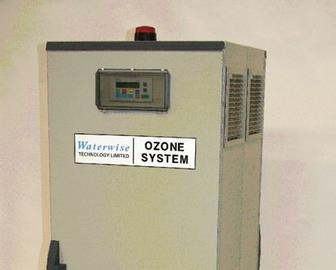It is estimated that about 80,000 cooling towers operate in the UK, using a combined annual total of 22,000 tonnes of chemical biocides and inhibitors
Add to that the water flushed through them to control the concentration of mineral salts arising from evaporation (for 4MW of cooling load this is about 72m3 of water a day), and it adds up to an unhealthy impact on the environment, and on operating costs.
Both designers and cooling tower operators are becoming more aware of these problems, which could be significantly reduced by making the right choice of water treatment system at the design stage.
The need for high levels of water hygiene and plant efficiency means galvanised and mild steel are no longer the best choice for cooling towers and evaporative cooling systems.
Stainless steel and plastics, while initially more expensive, will usually reduce operating costs to the extent that the payback period is less than 12 months.
Reduced bleed-off
Stainless steel provides a smooth, hygienic finish, which is easily cleaned and does not readily support bacteria and bio-fouling. This avoids the need for chemical corrosion inhibitor dosing and, with careful selection of water treatment method, allows systems to operate with reduced bleed-off and water consumption.
Using ozone
The traditionally used chemical biocides are increasingly being replaced with ozone, which is generated electrically on site from ambient air. It destroys all bacteria, including legionella.
Ozone’s effectiveness as a disinfectant allows systems to operate with higher mineral salt concentrations, reducing waste-water discharge by typically 50%. The remaining discharge can be reused for flushing toilets.
The ability of ozone treatment to work effectively on a wide range of water qualities enables the system to adapt automatically to changes in supply, from mains to rainwater, giving operators the opportunity to use rainwater as make-up for the cooling towers.
Environmental benefits
Ozone-treated water can be discharged to surface drainage or rivers and streams without further treatment.
In many cases the clean, highly oxygenated water benefits the aquatic environment.
Discharging direct to surface drainage means that exemption from sewage or output charge can be claimed on the cooling tower bleed-down. This will provide savings in the region of 40-60p per m3 on all bleed-off water.
Corporate commitment
The Co-op, which has a corporate commitment to managing its business in an ecological and socially responsible manner, is setting an example by incorporating a rainwater recovery system at its new distribution centre at Birtley near Newcastle.
Collected rainwater will provide make-up for the cooling towers serving the refrigeration plant.
This use of rainwater was made possible by the installation of a Filtex ozone system from water treatment specialist Waterwise Technology of Thame in Oxfordshire.
The system, pictured left, incorporates cyclone filtration to remove any suspended matter introduced by the rainwater, avoiding the need for additional pre-treatment and filtration.
Source
�ڶ����� Sustainable Design
Postscript
John Fielder is technology director of Waterwise Technology























1 Readers' comment